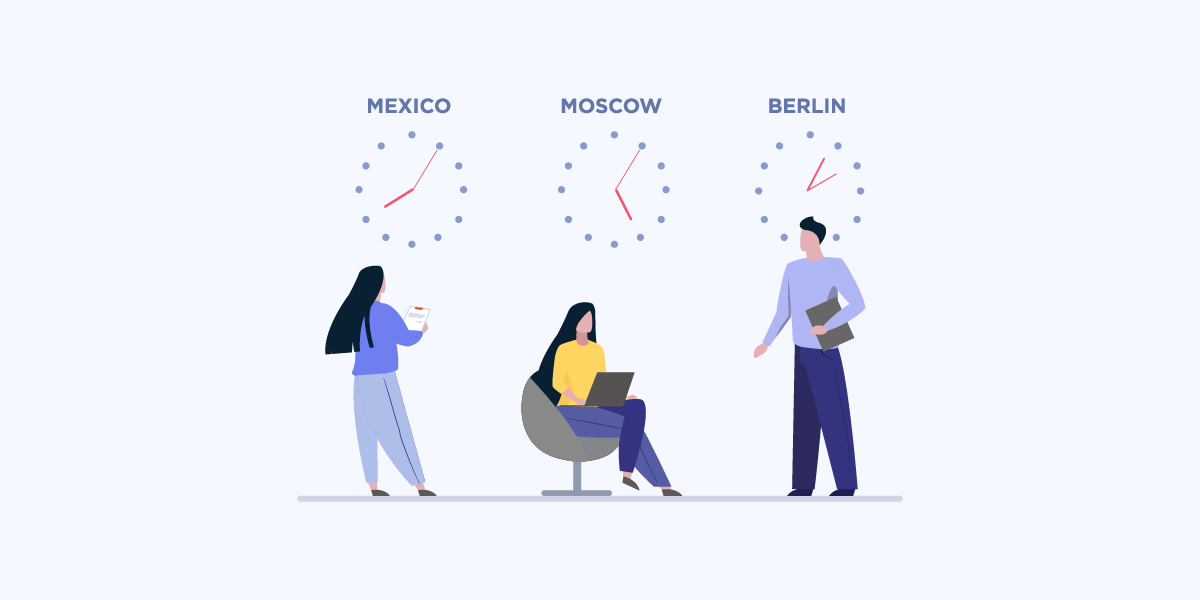
A time zone is a region on Earth that shares the same uniform standard time. All time zones are defined as offsets from Coordinated Universal Time (UTC) which range from UTC-12:00 to UTC+14:00. The offset will represent the number of hours and minutes ahead or behind UTC that the time zone is in. For example, all regions in Argentina will have UTC-03:00, and Japan will have UTC+09:00.
Some countries are quite huge thus have more than one time zone. The United States is an example of a huge country with multiple time zones. There are 6 time zones in the US. They are Eastern time, Central time, Mountain time, Pacific time, Alaska time and Hawaii-Aleutian time.
Daylight savings time (DST)
Several countries and regions have adopted daylight saving time (DST), also known as summer time. The main reason for implementing DST is to conserve energy and make better use of the daylight as a result of longer days in the summer. They will shift the offset by 1 hour plus or minus depending on the situation. In 2023, there are 72 countries that are observing DST.
Before the introduction of UTC
Before the 19th century, people tend to measure the time by measuring the position of the sun. However, the position can be different from place to place, making it tough for people to standardize the time when they need to travel to different places. In the 19th century, with the quick expansion of railway in different countries, a standardization for time was needed to avoid the conflict of time schedule.
Hence in year 1884, a new time standard was introduced at the International Meridian Conference, which became known as the Greenwich Mean Time or GMT. Before that, a Scottish Canadian engineer, Sir Sandford Fleming had proposed a draft of worldwide time standard, which divide the world into 24 different zones.
Introduction of UTC
The UTC was firstly introduced in 1963 as CCIR Recommendation 374, Standard-Frequency and Time-Signal Emissions. This new standard replaced the old GMT standard worldwide. The main difference between the 2 standards is that GMT is based on astronomical observations while UTC is based on atomic clocks.
Since then, several adjustments have been made to the system, including the implementation of leap seconds to simplify future adjustments. Today, it is being used in many Internet and World Wide Web standards, and also in aviation, weather forecasting and International Space Station.
Uses of time zones on the Internet
Time zones play an important role in facilitating global businesses, international travel and communication. The very nature of online merchants means that anyone around the globe can make a purchase on that e-commerce site. That means dealing with customers from many countries and time zones.
For example, people in Thailand may buy something from the United States. They will need the time zone info to convert and find out their delivery schedule in their local time. Time zone conversions also allows the users to know when they can receive support from the customer service in another country. Often, the customer service departments only work during office hours.
For the international travelers flying from one country to another, the time zone data helps to orient the passengers to know what time their flights are departing or arriving in the local time.
Anyone working for a multi-national company will know the challenges of coordinating online meetings with colleagues from different time zones. Thanks to the time zone conversion, it is easy for everyone involved to figure out the meeting time in their respective time zones.
Tip: There are websites out there that let you choose your time zone and see what is the time in another time zone. (E.g., https://www.worldtimebuddy.com/pst-to-canada-quebec-montreal)
Benefits of using time zones
By using time zones, people on the world will have a standard way to measure the time globally. People or organizations will have an easier time when they need to coordinate an activity or event across the world. Travelers can avoid time confusion especially when they need to travel across different countries or regions. This is because a standard time zone can help people to effortlessly convert to the local time. The world would find itself in chaos without the UTC time zones.
Conclusion
Websites wishing to detect the time zones that their web visitors are coming from, take note that you require IP geolocation data for that. Using the IP2Location Database starting with the DB11 package, website developers can query the time zone info corresponding with the user’s IP address. It is that easy to integrate time zone functionality in your website and reap the benefits.
THE POWER OF IP GEOLOCATION
Find a solution that fits.
